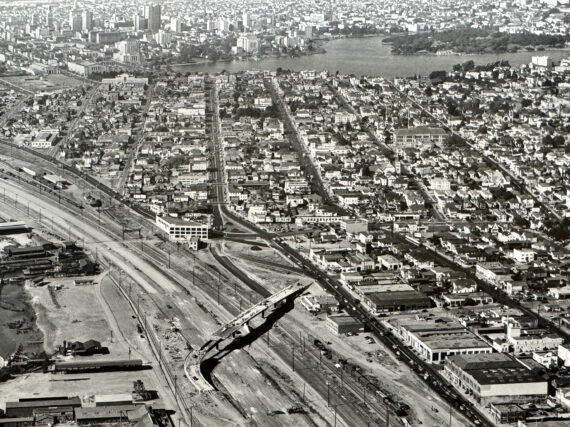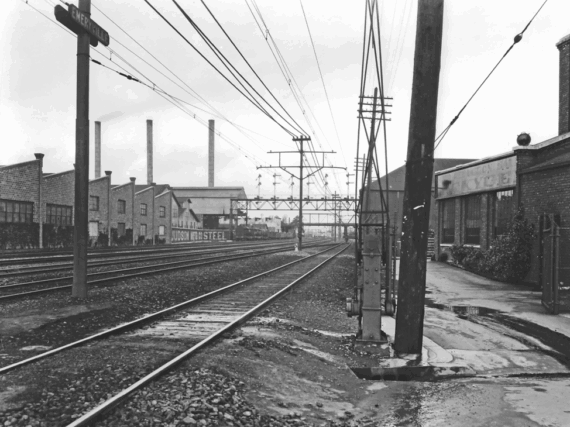It’s almost impossible to image what Oakland would look like today if the Western terminus of the Transcontinental Railroad hadn’t been established here in 1869. Where there had once been marshy wetlands, industry rushed in to build factories at this nexus of steel and sea. The railroad connected a broken country still recovering from the Civil War and solidified Oakland’s position as a hub of global commerce, for better or worse.
Oakland didn’t choose this destiny for itself – the decision was made by “The Big Four,” a cadre of robber barons who controlled the Central and Southern Pacific Railroad lines (and a host of related shell companies). This episode features an interview with Roland De Wolk, author of “American Disruptor: The Scandalous Life of Leland Stanford,” a new book that explores the life of the man who served as president of the railroad companies as well as senator and governor of California. De Wolk also highlights undeniable parallels between the Big Four’s predatory, monopolistic ethos and today’s Silicon Valley business culture.
The seed of Big Tech was planted by Leland Stanford and the university he founded. And just like during the Gilded Age, the East Bay is being impacted by tycoons disconnected from what their decisions mean to people living here. As Richard White, a Professor of American History at Stanford, wrote about the railroad bosses, “They laid hands on technology they did not understand, initiated sweeping changes, and saw these changes often take on purposes they did not intend.” Listen to the interview here or on your preferred podcast app.
East Bay Yesterday can’t survive without your support. Please donate to keep this show alive: www.patreon.com/eastbayyesterday







East Bay Yesterday can’t exist with your support! If you enjoy the episode, please donate: www.patreon.com/eastbayyesterday




